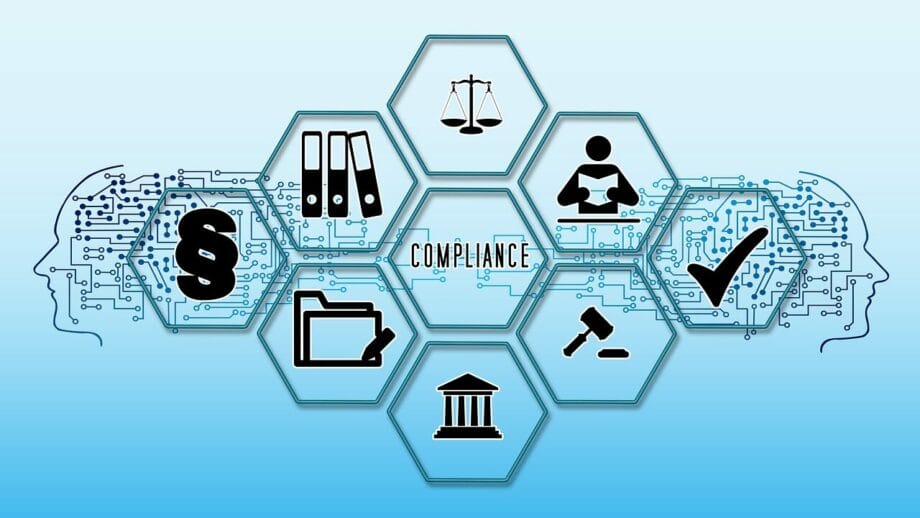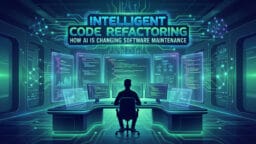AI is changing how we shop, drive, and even date. Now, it’s beginning to change something much more personal – how we seek justice after an injury.
From the moment you’re hurt in a car crash or slip-and-fall, a chain of decisions begins. Traditionally, those choices were made by people – insurance adjusters, legal assistants, attorneys, and judges. But today, more and more of those decisions are influenced, filtered, or outright made by algorithms.
It all sounds smart. Efficient. Fair. But is it?
Let’s take a closer look at what artificial intelligence is really doing inside the personal injury world – and why it matters if you’re ever injured.
Where AI is Already Working in Injury Law?

If you think of AI in injury law as some distant, sci-fi concept, think again. It’s already here, and it’s touching almost every stage of a personal injury case, from the moment an accident happens to the final payout.
Insurance Companies: Fast, Automated, and Often Cold
Insurance carriers were among the first to adopt AI, and they’ve used it aggressively. Their goal? Cut costs and close claims faster. But these tools can prioritize efficiency over fairness, often reducing a person’s injury to a data score.
- Claim Triage: AI models scan reports, photos, and sometimes even telematics (data from your car or phone) to flag whether a claim is likely to succeed or be denied.
- Bill Review Algorithms: Medical bills are fed into systems like CPT code checkers, where AI assigns standard values and flags “excessive” charges, often reducing what they’re willing to cover.
- Settlement Calculation Engines: Carriers like Allstate and GEICO reportedly use proprietary software that weighs injury type, property damage, location, past payout data, and claim history to generate lowball offers.
- Fraud Detection AI: Algorithms scan claims for patterns that suggest “red flags,” which can trigger investigations or automatic denials.
Law Firms: Working Smarter, Not Slower
Law firms are also adopting AI, but often in ways that benefit the client. These tools reduce busywork, speed up case development, and let attorneys spend more time on strategy and client advocacy.
- AI-Powered Intake Chatbots: Prospective clients talk to automated systems that pre-screen cases, gather facts, and sync with case management software.
- Natural Language Processing (NLP): Tools like CaseText, CoCounsel, or Harvey AI digest thousands of court rulings to pull relevant precedents or generate first-draft motions.
- OCR & Document Intelligence: Firms use optical character recognition and AI summarizers to process medical records, police reports, and insurance letters – a task that used to take paralegals hours or days.
- Outcome Prediction: Some platforms use machine learning to evaluate similar case outcomes, helping attorneys advise clients on whether to settle or litigate.
Courts: The Quiet Use of AI
The court system might not seem like a hub of tech innovation, but many are quietly experimenting with AI to ease caseloads and improve accessibility. It’s mostly behind-the-scenes, but it can still influence your case timeline and experience.
- Scheduling Optimization: Some dockets are managed by AI tools that reduce court backlog by reorganizing calendars in real time.
- Legal Document Translation: AI translation services now assist in jurisdictions with large multilingual caseloads.
- Evidence Management: eDiscovery platforms use machine learning to sift through thousands of documents and flag relevant data faster than any clerk could.
Clients: Served by Bots Before They See a Lawyer
Even before they meet an attorney, injured clients are increasingly interacting with AI. Some of it is helpful. But in more serious cases, automated tools may ignore nuance, downplay injuries, or make clients feel like just another claim file.
- “Injury Apps” & Legal Chatbots: Startups are offering legal help via chat for minor accidents, with some services recommending a settlement based on basic Q&A and photo uploads.
- Auto-generated Demand Letters: Some platforms draft letters without ever consulting an attorney, meaning your pain is summarized by an algorithm trained on averages.
These tools may not wear suits, but they’re deeply involved in how justice unfolds, quietly influencing what your injury is “worth,” how soon you get paid, and whether you ever talk to a real person. But there are still some nuances.
Let’s say you’re hit by a distracted driver on I-95. You upload a few photos to your insurance app, answer some yes/no questions, and within minutes, a settlement offer appears on your screen. It feels efficient – even convenient. But what the app doesn’t see is the concussion symptoms you won’t feel until tomorrow, or the way this crash could trigger months of physical therapy. The AI processed the case in seconds, but skipped the human cost. This is the gap tech still struggles to bridge.
What AI Promises: Speed, Access, and Consistency

There’s no doubt about it – AI has serious upside.
- Faster claims. Algorithms can pull together bills, crash reports, and even geolocation data from your phone in moments. That can mean quicker claim reviews, faster settlements, and less time waiting on paperwork when you’re already overwhelmed by medical appointments, missed work, and recovery.
- Better access. For people who can’t afford a lawyer or live in underserved or rural areas, AI-driven tools – like virtual legal assistants or chat-based intake platforms – can offer basic legal help at low or no cost. It can help someone who might otherwise have no help at all get pointed in the right direction.
- More consistency. With the right design, machine learning models could reduce human error or bias in judging two similar cases differently. That means two people injured in similar ways may finally be treated more equally, regardless of where they live, what they look like, or whether they have prior legal experience.
For someone with a broken leg and mounting bills, speed and access aren’t just buzzwords. They’re a real relief. And in the best cases, AI can help you get that relief faster, without cutting corners.
But that’s just half the story.
The Other Side: Bias, Oversimplification, and Data Misuse
The promise of fairness often hides the risk of shortcuts.
AI Is Only as Fair as the Data It Learns From
Many algorithms are trained on historical insurance settlements. But those past decisions are filled with bias – based on race, gender, zip code, or income. When AI learns from that, it doesn’t fix the problem. It bakes it in.
It Can Undervalue Real Pain
An algorithm can scan your X-ray, but it doesn’t know you haven’t slept in weeks or can’t pick up your child anymore. Those human details matter – and they affect compensation.
Who is Accountable When It Goes Wrong?
When a claim bot makes a mistake or a predictive model cuts a payout short, who do you call? An AI doesn’t have a phone number. But a personal injury lawyer does.
Your Data is the New Battlefield
From your Fitbit to your social media, your own devices may become part of the case, sometimes used against you. Insurers are mining personal data to lower payouts. That’s not science fiction. It’s policy.
Another concern growing in legal circles is transparency. Many of the AI tools being used today, especially by large insurers, are “black boxes.” That means even the people using them may not fully understand how they arrive at certain decisions. And when the logic behind a low settlement offer or a case denial can’t be explained or challenged, that’s a problem. Justice requires clarity. You deserve to know why a decision was made, especially when it affects your life and health.

What Does This Mean if You are Injured Today?
This doesn’t mean you need to fear technology. It means you need to understand how it’s used and whether it’s helping or hurting your case.
- Don’t accept the first automated offer, especially from insurers. Get a second opinion from an actual lawyer.
- Keep records of everything, even if a platform tells you it’s “already reviewed.” Algorithms miss things. Humans catch them.
- Know your digital footprint matters, and protect it. What you post, wear (like smartwatches), or share can impact your case more than ever.
The Human Side of Justice Still Matters
AI can do a lot of impressive things. But it can’t tell your story.
It can’t explain the emotional trauma, the fear you feel every time you get in a car, or the way your life has changed after an injury. It can’t fight back when an insurer says you don’t deserve more. And it can’t cross-examine a witness in court.
It doesn’t sit across from you at the kitchen table and listen to what this accident has really cost you. It doesn’t care if your child saw it happen or if your pain keeps you up at night.
We’re excited about the future of AI, and we believe it can make the legal system faster and more accessible. But only if it stays grounded in what matters most: people. Because justice isn’t just about data – it’s about dignity.






